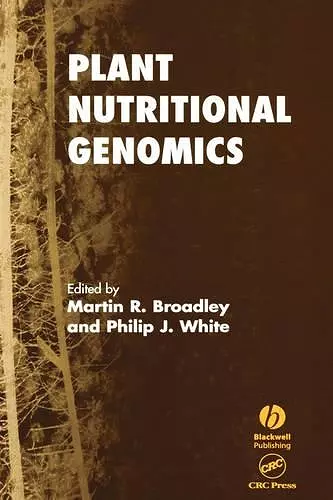Plant Nutritional Genomics
Philip J White editor Martin R Broadley editor
Format:Hardback
Publisher:John Wiley and Sons Ltd
Published:17th Jan '05
Currently unavailable, and unfortunately no date known when it will be back

A ‘textbook’ plant typically comprises about 85% water and 13.5% carbohydrates. The remaining fraction contains at least 14 mineral elements, without which plants would be unable to complete their life cycles.
Understanding plant nutrition and applying this knowledge to practical use is important for several reasons. First, an understanding of plant nutrition allows fertilisers to be used more wisely. Second, the nutritional composition of crops must be tailored to meet the health of humans and livestock. Third, many regions of the world are currently unsuitable for crop production, and an understanding of plant nutrition can be used to develop strategies either for the remediation of this land or for the cultivation of novel crops.
That application of knowledge of plant nutrition can be achieved through genotypic or agronomic approaches. Genotypic approaches, based on crop selection and / or breeding (conventional or GM), have recently begun to benefit from technological advances, including the completion of plant genome sequencing projects. This book provides an overview of how plant nutritional genomics, defined as the interaction between a plant's genome and its nutritional characteristics, has developed in the light of these technological advances, and how this new knowledge might usefully be applied.
This is a book for researchers and professionals in plant molecular genetics, biochemistry and physiology, in both the academic and industrial sectors.
The book is divided into 13 chapters covering three distinct topics: the molecular physiology of individual nutrients, methods for studying plant nutritional genomics, and applications of the knowledge gained.
"This is a really good book that should be part of the personal library of all those working in plant nutrition. It should also be consulted by those who want to keep abreast of recent developments or use it as a basis for an initial but integrated introduction to the molecular physiology of nutrient acquisition and assimilation and how this knowledge can potentially be exploited. It will also be useful to those preparing advanced undergraduate or graduate-level lecture courses in plant nutrition."
Roger A Leigh - Annals of Botany
ISBN: 9781405121149
Dimensions: 248mm x 166mm x 23mm
Weight: 652g
352 pages